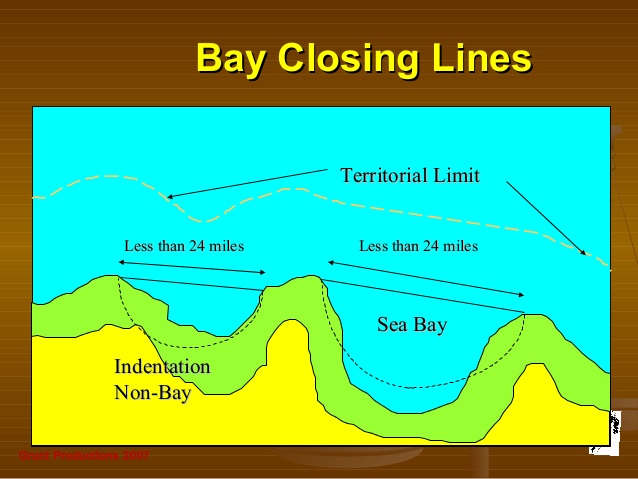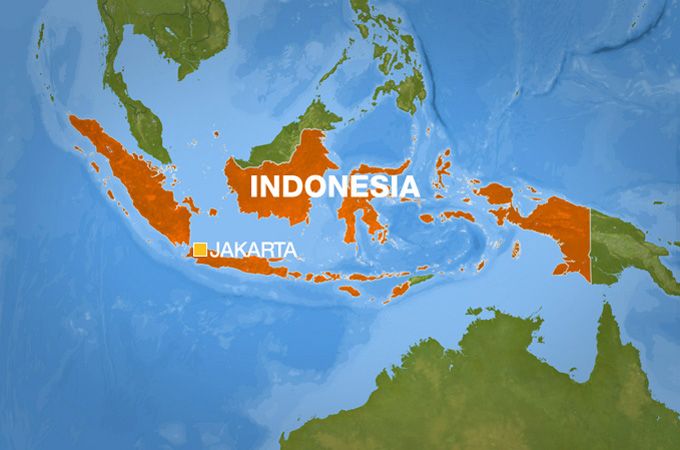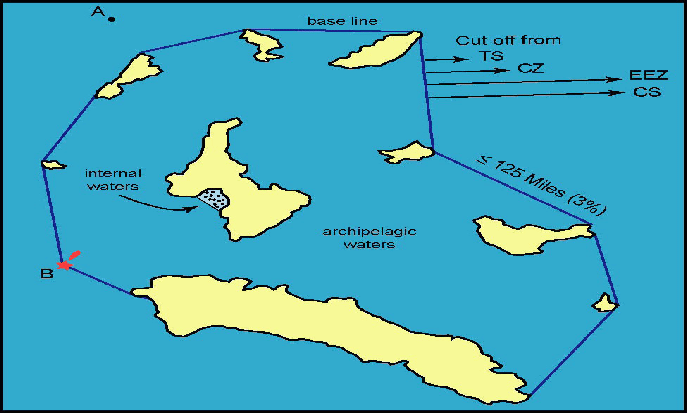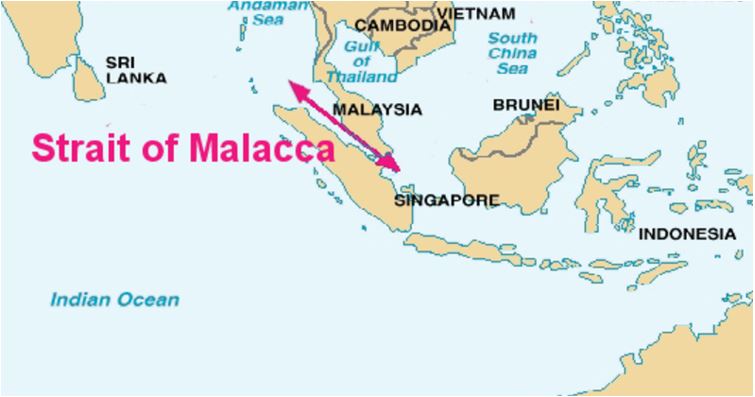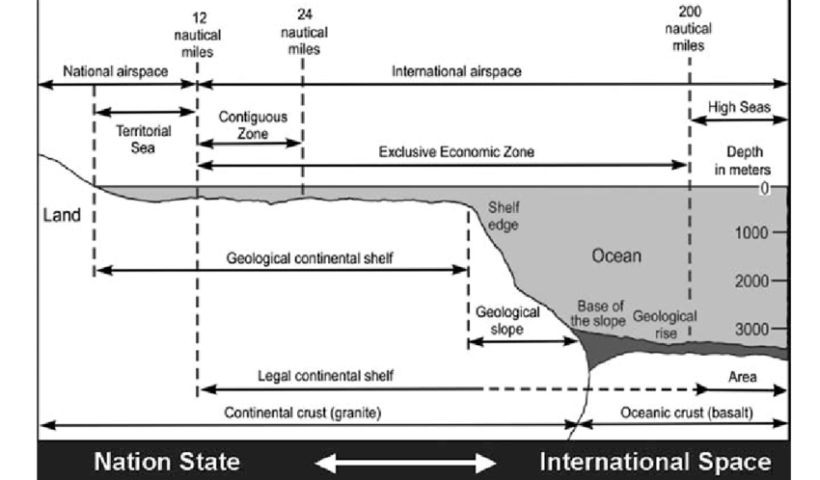“Closing line” is a dividing line between the internal waters and the territorial seas of a coastal State enclosing a river mouth, a bay or a harbor; or a dividing line for the archipelagic waters of an archipelagic State as stated in UNCLOS Articles 9–11 and 50.. what is the meaning of “Closing line” in law of the sea, LOSC and customary international law, what is the meaning of “Closing line” in law of the sea, LOSC and customary international law
View More what is the meaning of “Closing line” in law of the sea, LOSC and customary international lawTag: archipelagic waters
what is the meaning of Freedom of Navigation in law of the sea and customary international law
what is the meaning of Freedom of Navigation in law of the sea and customary international law, Arctic Sunrise Arbitration, LOSC, ship is without nationality, Ships With Suspicious Nationality, slave trade, unauthorized broadcasting, warship
View More what is the meaning of Freedom of Navigation in law of the sea and customary international lawJurisdiction of Archipelagic States Over Archipelagic Waters(based on law of the sea, customary international law and LOSC)
As clearly stated in Article 49(1) and (2) of the LOSC, archipelagic waters are under the territorial sovereignty of the archipelagic State. However, care should be taken in noting that the exercise of the archipelagic State’s territorial sovereignty is subject to general international law and specific provisions under Part IV of the LOSC.. Jurisdiction of Archipelagic States Over Archipelagic Waters(based on law of the sea, customary international law and LOSC), archipelagic doctrine, Archipelagic States, Archipelagic States and Maritime Navigation, archipelagic waters, Archipelagic Waters and Exclusive Economic Zone, archipelagic waters unclos, archipelagic waters vs internal waters, Duzgit Integrity Arbitration, Jurisdiction of Archipelagic States, Legal status of archipelagic waters, LOSC, The Archipelagic States Concept, What are the four categories of waters under the Unclos?, What is archipelagic baseline?, What is the archipelagic rule?, Which waters are identified as archipelagic waters?
View More Jurisdiction of Archipelagic States Over Archipelagic Waters(based on law of the sea, customary international law and LOSC)what is the meaning ARCHIPELAGIC WATERS in the international law of the sea and LOSC?
The key concept of archipelagic waters is that a group of islands in mid-ocean, i.e. ‘midocean archipelagos’, should be considered as forming a unit; and that the waters enclosed by baselines joining the outermost points of the archipelago should be under territorial sovereignty. While the question of a special archipelagic regime has been discussed on various occasions since the early twentieth century, neither the 1930 Hague Conference, nor UNCLOS I could resolve this question. The 1958 Geneva Conventions contain no provision with regard to mid-ocean archipelagos or archipelagic waters.
. what is the meaning ARCHIPELAGIC WATERS in the international law of the sea and LOSC?, archipelagic doctrine, Archipelagic States and Maritime Navigation, archipelagic waters, Archipelagic Waters and Exclusive Economic Zone, archipelagic waters unclos, archipelagic waters vs internal waters, archipelago, Article 46(a) of the LOSC, continental shelf, EEZ, law of the sea, Legal status of archipelagic waters, LOSC, The Archipelagic States Concept, UNCLOS I, UNCLOS III, What are the four categories of waters under the Unclos?, What is archipelagic baseline?, What is the archipelagic rule?, Which countries are archipelagos?, Which waters are identified as archipelagic waters?
what is the meaning of INTERNATIONAL STRAITS and its legal issues (typology and rules)
The straits under Part III of the LOSC contain two types of straits: straits to which the regime of transit passage applies and straits to which the right of innocent passage applies.
The first type concerns straits to which the regime of transit passage applies. In this regard, Article 37 provides: This section applies to straits which are used for international navigation between one part of the high seas or an exclusive economic zone and another part of the high seas or an exclusive economic zone. This provision contains two criteria for identifying international straits under Part III.
The first is the geographical criterion. Such straits are those connecting ‘one part of the high seas or an exclusive economic zone and another part of the high seas or an exclusive economic zone’. The second is the functional criterion, namely ‘straits used for international navigation’. Concerning the relationship between the two criteria, the ICJ, in the Corfu Channel case, seemed to consider that the geographical criterion provided the primary criterion… what is the meaning of INTERNATIONAL STRAITS and its legal issues (typology and rules), Åland Islands, Åland Strait, archipelagic waters, Arctic Ocean, Arctic waters, Article 36 of the LOSC, Atlantic Oceans, Corfu Channel judgment, Dardanelles, Dover Strait, EEZ, international navigation, international shipping, international straits, LOSC, Montreux Convention, non-suspendable innocent passage, Osumi Strait, right of innocent passage, Strait of Gibraltar, Strait of Magellan, Straits of Malacca, territorial sea, territorialisation, transit passage, Turkish Straits
Typology of Marine Spaces
In summary, spatial jurisdiction comprises both complete spatial jurisdiction (= territorial sovereignty) and limited spatial jurisdiction (= sovereign rights). In either case, it must be stressed that coastal State jurisdiction over marine spaces is spatial by nature. It follows from the above discussion that marine spaces in the law of the sea can be categorised as follows :
(i) Marine spaces under national jurisdiction
(a) Marine spaces under territorial sovereignty (or complete spatial jurisdiction): internal waters, the territorial sea, international straits, and archipelagic waters.
(b) Marine spaces under sovereign rights (or limited spatial jurisdiction): the contiguous zone (where the EEZ is established), the EEZ and the continental shelf.
(ii) Marine spaces beyond national jurisdiction the high seas and the Area., Typology of Marine Spaces, archipelagic waters, beyond national jurisdiction, contiguous zone, High seas, internal waters, international straits, jurisdictional zones, national jurisdiction, territorial seas, Typology of Marine Spaces

